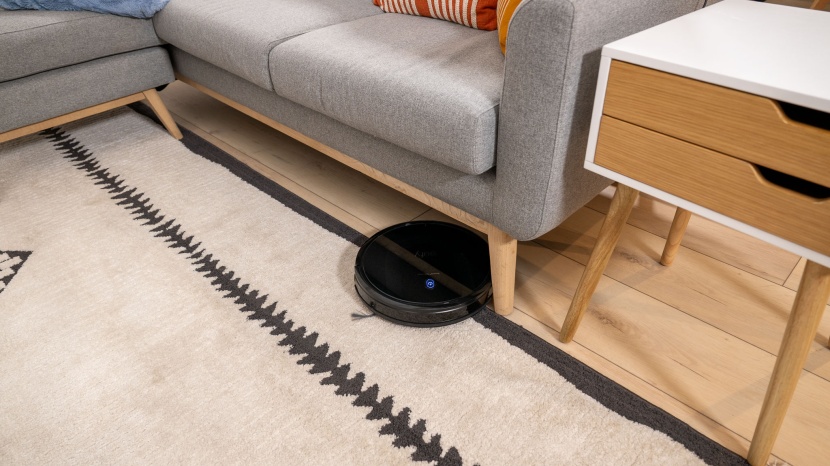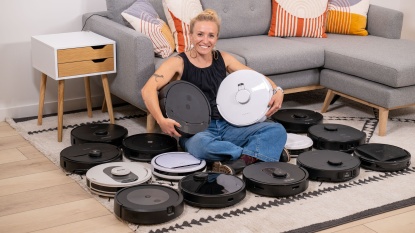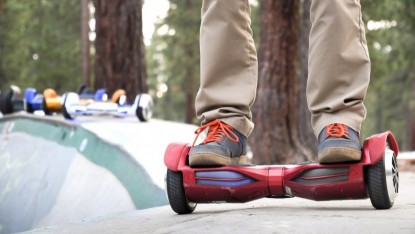Robot vacuum cleaners are all the rage these days because they help reduce the amount of time we need to spend vacuuming and sweeping our floors manually. Years ago, these vacuums constantly struggled to do their jobs, but now modern options have become surprisingly effective — and some are even capable of mopping your hard floors.
But which one is the best for your situation? We purchased the leading models and tested them for months to find out which is the best robot vacuum for different types of floors and households. Keep reading to learn if you should toss out your manual upright vacuum, and which robotic companion might be the best fit for you and your home.
Why Vacuum?
Why vacuum in the first place? Why have a robotic one? The most obvious reason many vacuum is to improve the appearance of their floors, picking up stray dirt and dust. While each little piece of the debris on our floors is rarely harmful on its own, as they build up over time, that can change.
Flooring experts say that regular vacuuming can dramatically increase the air quality of your home and have many health benefits. Vacuuming can also increase the life of your carpet, freeing trapped particles that over time could be ground deep into the carpet, abrading the fibers and damaging the floor. The next thing you might wonder is how often should I vacuum?
The advice on frequency could be disheartening because it boils down to this: You probably should vacuum more often than you currently do. Experts in the field recommend that you vacuum at least once a week, potentially two to three times a week if your home has high traffic, pets, or has lots of dirt and grime tracked in. This is why a robot vacuum cleaner exists — to make it easier to vacuum more frequently. Next question:
Do You Need a Robot Vacuum Cleaner?
If you suspect your floors could benefit from more frequent cleaning sessions than you're willing to do yourself with an upright or stick vacuum, delegating this task to a robot vacuum is a great option.
Can a Robot Replace an Upright?
Unfortunately, there is one key fact to remember: None of the robot vacuums we've ever tested has been a perfect replacement for a good upright or canister vacuum. They just don't have the power or capacity to take care of, say, a pile of pet hair after trimming a large Labradoodle with dog clippers. Do not expect to buy a robot and throw away your manual model. Similarly, robots tend to struggle to clean edges and corners well, and they often can't fit around all furniture in a home. And, after years of testing models, we haven't tested a single one that could navigate and clean stairs.
Robot vacuums aren't yet able to replicate sharp-eyed humans so they don't always realize they've missed a spot that could need an extra pass. If you need truly immaculate floors and currently vacuum at least once or twice a week, then a robot vacuum is probably not a purchase you should make. Your money would probably be better spent on a higher-end conventional vacuum. However, a robot vacuum can still be an extremely helpful addition to your home, and probably will make it cleaner overall.
Robot vacuums are intended to do a frequent cleaning job, thus prolonging the time between required deep cleans with a manual system, letting you spend less time pushing a vacuum and more time playing, relaxing, or working on more important tasks. This is the main argument for why you should buy a robot vacuum: Having your floors cleaned acceptably well on a daily basis will probably yield a higher overall level of cleanliness than deep cleaning with a good upright or top-rated canister vacuum every few weeks.
How to Pick the Right One
Step 1: What are You Standing On?
As robot vacuums have evolved over the last decade, they've proven capable for cleaning carpets, rugs, and hard floors. However, they still can't pick up toys, shoes, socks, or other household items that clutter floors — so you'll likely need to tidy up before turning a robot loose to clean. With that in mind, let's talk about carpet first.
Most models can cope with low-pile and medium-fluffy carpet, but they tend to struggle on shaggy, high pile carpet because they get bogged down trying to navigate through the long, soft fibers. If you have a beloved shag rug, you'll want to keep your manual vacuum. Suction power is important for all carpet cleaning, but a brush roller that can agitate the carpet fibers is the most important feature to look for. Some budget models skip the brush roller and only have a suction slot — these models have all failed to clean our carpets well compared to those that have brush rollers.
Robots are now very good at cleaning hard floors. If you're not a fan of sweeping with a broom, almost all the models we tested will let you ignore a broom in your closet for at least a few days and possibly for weeks at a time.
Most have spinning side brushes that sweep crumbs away from edges and corners so they can suck them up, and some now include mop pads they can moisten themselves to wet-clean your floors. The very best mopping vacuums now use base stations that let them automatically fill themselves with water and cleaning solutions for their mops, which they can return to after mopping to empty dirty water. Premium models even wash and dry their own mop pads!
Step 2: What is in the room that you want to clean? How many rooms?
In what domain will your little robotic friend soon roam? A single room studio? A multiple room house? Office floor with cubicles? One large room divided with a sofa?
Different models use different sensors and systems to navigate over floors and through rooms. Some use bounce-based navigation where they randomly cruise until they hit a wall, which causes them to turn and move in another direction until they once again hit something, turn, and continue on — and so on until they've likely covered your entire floor.
Better models use laser-based LiDAR sensors to scan walls and furniture to create maps of your floor plan, which helps them more precisely move through each room. These models also let you use apps to task and control their cleaning schedules and behavior. Many now let you create virtual walls they won't move past or set no-go zones they will vacuum around, giving you a lot of control over where they roam and when.
Some models are even smart enough to roll around the perimeter then vacuum the middle of your floor in precise back-and-forth rows. If you're a fan of perfect vacuum lines left by a fresh vacuuming session, some premium models can work while you're away from home and possibly delight you when you return with smile-inducing evidence of their paths.
For complicated floor plans, modern options with apps keep track of areas cleaned, recharge as needed, and resume cleaning where they left off. While some budget models have small on-board dust bins that you'll have to empty between most cleaning sessions, most models are trending toward having base stations that let them auto-empty their dust bins into larger hoppers at the station that you won't have to empty yourself very often.
Step 3: Features or Fluff?
Robot vacuum technology has come an incredibly long way in the last few years, but not all features are worth the premium costs they command. After you have settled on one or two contenders in the price range you're comfortable with, take a closer look at which additional features each of those models offers.
There are two features that we always recommend. The first is the ability to automatically locate and recharge itself and then resume cleaning if necessary. The entire point of getting one of these products is to minimize the effort to clean your home. So the best products will give you confidence that they are dutifully cleaning while you are away. The second desired feature is the ability to set a schedule. These two features, coupled with some careful setup of your home and the removal of obstacles, will allow you to get the most out of your robotic companion.
Another extremely useful feature is the ability to cordon off “Do Not Enter” areas. These can also be called virtual walls or no-go zones. Most new models now have sensors that detect stairs so they don't cruise over the edge, but there are some rooms you might want your robot to avoid altogether. For instance, if you have an entryway where kids drop their shoes with their laces undone, a no-go zone feature will let you keep your robot away from the area.
All these features help the robot clean more effectively and automatically. But what about others, like mops? Are mopping features worth spending extra for?
Robot vacuums with mop features are now effective at reducing dust and debris on hard floors, and we've found some that are capable of cleaning dried-on stains from liquids like coffee. You can even task them to mop up wet spills. However, they're not as effective at deep cleaning as standard manual mops, and they're certainly not as powerful as steam mops. Still, if you have the budget for a premium model with automatic mopping capabilities, you might appreciate their ability to mop up dust and light stains.
What Is the Ideal Robot Vacuum?
Basically you want a model that will clean floors, avoid getting trapped or damaging anything, and make its way back to its docking base to recharge. You want your robot to be self-reliant and to excel at navigating rooms and around furniture. The ideal robot vacuum would be one that we could essentially ignore for most of the time, merely stopping to occasionally empty their dust bins or water reservoirs (if they also mop) and to clean their filters. The worst-case scenario would be having to rescue the robot on a daily basis, finding where it ran out of battery under a bed or got stuck on a stray sock — outcomes that could lead to so much frustration that you just quit using the thing.
Fortunately, our full review compares the top-rated robot vacuums and identifies how well each model can navigate and clean. See our detailed review to find which model is best for you.














